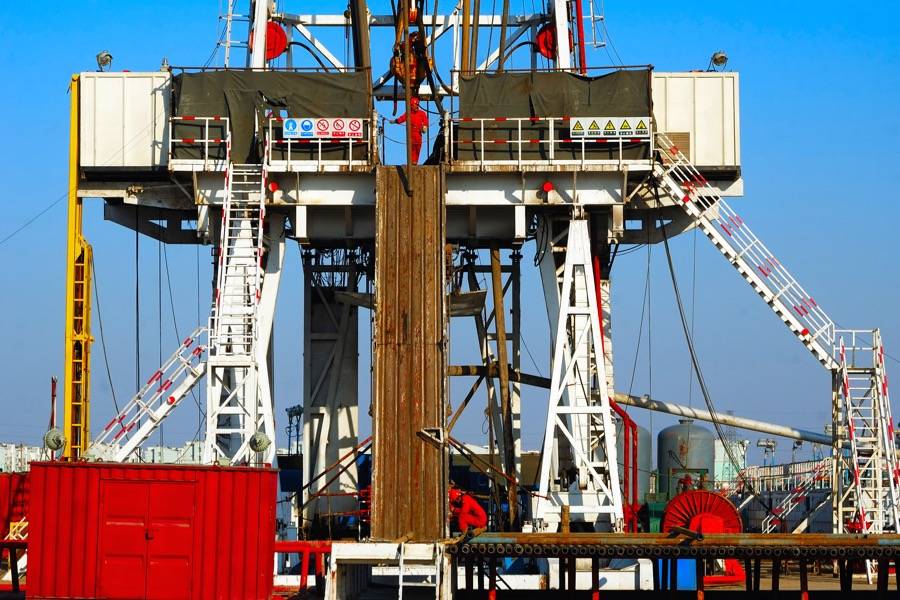API Tension and Burst - Tutorial
NOTICE: Our Mathcad database got attacked and infected with a virus. Unfortunately, we've had to shut it down until further notice.
You can safely browse the pages, as the Mathcad server was separate to this main website, and was only accessible here. (We used something called an iFrame, which is like a window into a different website).
UPDATE 28th of January 2020: the virus happened just over a week ago. We've temporarily cut and pasted the text parts of the Mathcad pages rather than having blank pages there.
UPDATE 3rd of February 2020: We've been unable to recover the Mathcad worksheets and offer them in a format that provided total security to users. They were published a decade ago, and our IT people say that they would need a complete re-creation with the latest code and security fixes.
APPEAL: These 44 pages were created, and offered as a free resource for over a decade. We know from our website analytics that more than 1000 users visited each month. If only half of these regular visitors donated $20, we would have enough to create an even better solution. As you know, time is money, have these Mathcad pages saved you $20 in time over the years? We expect that they have, not to mention the learning opportunities provided to new engineers entering the industry.
Please, donate at least $20 as a one-off payment, to bring back the drillers Mathcad back as an always free to use resource!
YES! I've gotten value from the drillers Mathcad in the past, and a $20 is a very affordable way of saying thanks. I also want to preserve this tool for future engineers.
NO! I can't or won't donate to the restoration fund. I'm happy to spend a few minutes to offer a testimonial to help encourage the effort. These worksheets do have value. Offer Feedback.
Tubular Tension and Burst Strengths, release 5a, issued 16 June 2008. JIT version.
This worksheet exists in two versions. They are identical apart from the way they are formatted. The Work version hides intermediate calculations and allows the user to see the results just below the inputs. This is useful for quick “what-if” games, changing various inputs to see what works best. The JIT version displays all intermediate calculations, plus adds tutorial text to explain the methodology.
This “Just In Time Learning” tutorial version of the worksheet explains the theories behind the calculations, it shows the formulae and intermediate results. It is assumed that you are familiar with the concepts of Stress, the relationship between Stress and Strength, the use of Design Factors and Temperature derating of yield stress and strength. Each of these topics is covered in other DDC worksheet tutorials so it is recommended to complete these first if you’re not familiar with any or all of these topics.
Use the Working version of the worksheet rather than this one if you just want to run the numbers.
Tutorial text is shown in blue. It should take 20-25 minutes to work through this tutorial. Leave the user input as it is for the tutorial.
At the end of this tutorial, YOU will be able to;
1. Describe the theoretical basis for calculating the tensile strength of tubulars.
2. Describe the theoretical basis for calculating the internal yield strength (burst strength) of tubulars.
3. Explain the implications of the API tolerance on wall thickness with respect to designing and using casings.
4. Correctly select Design Factors for tension and burst to account for API manufacturing tolerances.
5. Use this worksheet (both Working and Tutorial versions) to evaluate casing tensile and burst strengths, accounting for temperature and Design Factor.
If a full audit trail of the calculations is needed, or if you wish to audit the formulae and methodology, this version can be used instead of the work version and saved in a format which can be pasted into a document.
Description
This worksheet takes a set of inputs to calculate the burst and tensile strengths of a tubular. It uses the formulae defined in the referenced documents to calculate the tubing design parameters and will account for the effects of temperature, internal pressure and tension.
API monogrammed pipe is manufactured to tolerances specified in API Specification 5CT. The tolerance for wall thickness t is wide – the actual wall thickness can be 12.5% less than the nominal size and still be within API limits. Modern steel mills are capable of making tubings to much less than this tolerance and what usually happens in practice is that the tube is manufactured to use the least amount of steel, to maximise profit. The effects of these tolerances are documented in the JIT version of this worksheet.
User input
4.5″ 9.5 ppf4.5″ 10.5 ppf4.5″ 11.6 ppf4.5″ 13.5 ppf4.5″ 15.1 ppf5″ 11.5 ppf5″ 13 ppf5″ 15 ppf5″ 18 ppf5″ 21.4 ppf5″ 23.2 ppf5″ 24.1 ppf5.5″ 14 ppf5.5″ 15.5 ppf5.5″ 17 ppf5.5″ 20 ppf5.5″ 23 ppf5.5″ 26.8 ppf5.5″ 29.7 ppf5.5″ 32.6 ppf5.5″ 35.3 ppf5.5″ 38 ppf5.5″ 40.5 ppf5.5″ 43.1 ppf6.625″ 20 ppf6.625″ 24 ppf6.625″ 28 ppf6.625″ 32 ppf7″ 17 ppf7″ 20 ppf7″ 23 ppf7″ 26 ppf7″ 29 ppf7″ 32 ppf7″ 35 ppf7″ 38 ppf7″ 42.7 ppf7″ 46.4 ppf7″ 50.1 ppf7″ 53.6 ppf7″ 57.1 ppf7.625″ 24 ppf7.625″ 26.4 ppf7.625″ 29.7 ppf7.625″ 33.7 ppf7.625″ 39 ppf7.625″ 42.8 ppf7.625″ 45.3 ppf7.625″ 47.1 ppf7.625″ 51.2 ppf7.625″ 55.3 ppf7.75″ 46.1 ppf8.625″ 24 ppf8.625″ 28 ppf8.625″ 32 ppf8.625″ 36 ppf8.625″ 40 ppf8.625″ 49 ppf9.625″ 32 ppf9.625″ 36 ppf9.625″ 40 ppf9.625″ 43.5 ppf9.625″ 47 ppf9.625″ 53.5 ppf9.625″ 58.4 ppf9.625″ 59.4 ppf9.625″ 64.9 ppf9.625″ 70.3 ppf9.625″ 75.6 ppf10.75″ 32.75 ppf10.75″ 40.5 ppf10.75″ 45.5 ppf10.75″ 51 ppf10.75″ 55.5 ppf10.75″ 60.7 ppf10.75″ 65.7 ppf10.75″ 73.2 ppf10.75″ 79.2 ppf10.75″ 85.3 ppf11.75″ 42 ppf11.75″ 47 ppf11.75″ 54 ppf11.75″ 60 ppf11.75″ 65 ppf11.75″ 71 ppf13.375″ 48 ppf13.375″ 54.5 ppf13.375″ 61 ppf13.375″ 68 ppf13.375″ 72 ppf16″ 65 ppf16″ 75 ppf16″ 84 ppf16″ 109 ppf18.625″ 87.5 ppf20″ 94 ppf20″ 106.5 ppf20″ 133 ppf |
Select a casing
75 |
FCK |
Enter the temperature at the depth of interest. Temp =
80 |
Enter the number part of the steel grade eg for L80, enter 80 (units are kpsi). Gr =
1.15 |
Enter the design factor for burst. DFb =
1.25 |
Enter the design factor for tension. DFt =
Click here when any values are modified to update the result.
Calculations
Pipe Body Yield (tensile strength)
Calculate the nominal pipe cross sectional area.
The nominal CSA uses the nominal outside diameter and nominal wall thickness to calculate the cross sectional area. This figure for each casing size and weight is given in API 5C2 Table 4 Column 4. For the JIT version defaults of a 9.625″ 40 ppf casing (nominal t = 0.395″), the area from the table is 11.454 in2.
Calculate the API Minimum Yield Strength.
The minimum yield strength quoted in API 5C2 is found by multiplying the API Minimum Yield Stress (in psi or Pa) by the cross sectional area (in in2 or m2). This figure for the pipe body in each casing size, weight and grade is given in API 5C2 Table 1 Column 13. For the JIT defaults, 80,000 psi steel, the yield strength given in 5C2 is 916,000 lbs.
Dimensions and tolerances
From API 5CT, OD tolerance for pipe smaller than 4.5″ is +/- 0.031″ (0.019 mm). For 4.5″ or larger, OD tolerance is +1.00%, -0.5%.
The worksheet uses an IF function to apply different formulae, depending on the OD.
The outside diameter currently entered is or Within the range of API tolerances, the minimum and maximum OD can be found by applying the tolerances in API 5CT to the outside diameter. The outside diameter can range between Dmax and Dmin as shown just above – this is a range between largest and smallest possible OD of .
From API 5CT, tolerance on wall thickness is +0 -12.5%. The nominal wall thickness is therefore also the maximum wall thickness. Calculate minimum wall thickness.
The tolerances on wall thickness are much more important for casing strengths than the OD. Notice that the wall thickness cannot be greater than nominal – it can only be less (thinner).
The wall thickness currently entered is or The actual wall thickness can be up to 12.5% less, which is or below nominal. For burst, this is compensated for by the API 5C3 / ISO 10400 formula which multiplies the theoretical burst strength of the pipe by a factor of 0.85. For tension, the API / ISO formula does not do this and so a higher Design Factor should be used to account for this.
Under the API 5CT manufacturing tolerances, the largest possible ID will occur when OD is largest and wall thickness is thinnest.
The smallest possible ID will occur when OD is smallest and wall thickness is greatest.
The most likely case occurs when the least amount of steel is used; the minimum cross sectional area will occur with the smallest OD and the thinnest wall.
Compare this to the nominal ID which is the OD minus 2x the wall thickness, or in this case or .
Casing is drifted with a round mandrel which is smaller than the nominal ID. This is defined in Table 54 of API 5CT. Sometimes a casing or tubing is Specially Drifted with a drift of larger than that specified in Table 54; see Table 27 of API 5CT. It is rare for undamaged casing to not drift with the larger special drift – because pipe is usually manufactured to be as close as possible to the minimum CSA. For the dimensions in this worksheet, the ID is larger than the nominal ID by or .
Drift diameter depends on the pipe OD and is defined in Table 54 of API 5CT. It is related to the nominal inside diameter and there are three size ranges of pipe to consider. The IF function uses the correct formula for the OD of the pipe.
The drift diameter is smaller than the nominal ID in this case by or . It is smaller than the likely ID in this case by or .
Internal Yield Pressure (burst strength)
The burst strength formula is very simple. Imagine that a pipe is cut down the length and the two sides are glued back together. If pressure is applied inside the pipe, there will be a force acting on the glue as a result of the pressure inside trying to push the two sides apart.
The formula that API 5C3 / ISO 10400 defines uses the OD rather than the ID of the pipe. This assumes that the pressure acts over a greater area than it does and so will give a more conservative result. The nominal OD will be very close to the actual OD if the pipe is within tolerance – however the nominal ID can be significantly different (less than) the actual ID and this would then over-calculate the maximum allowable pressure. It’s preferable to be slightly conservative than to impose more stress than should be imposed.
The calculation is then multiplied by 0.875 – so it assumes that the wall is as thin as possible within the API tolerances.
Calculate the API Minimum Internal Yield strength from the API 5C3 formula of the pipe body.
Use of Design Factor and Temperature Correction Factor
The subjects of Design, Safety and Correction Factors is thoroughly covered in the Drillers.com online manual. Safety factors are NOT used in casing design, Design Factors are.
As steel gets hotter, the Yield Strength decreases. This is accounted for by calculating the Temperature Correction Factor for a temperature above ambient (70F). The worksheet has already calculated the TCF for the temperature entered; .
As can be seen above, the calculations for tensile strength assume that the wall thickness is nominal. The formula for burst strength assumes that the wall thickness is minimum. In tubular design, an engineer uses Design Factors to reduce the maximum load so as to prevent the stress exceeding the elastic limit of the material. (Reminder; a Safety Factor is relative to failure load while a Design Factor is relative to some other property).
The API Minimum Yield Stress σymn actually exceeds the Elastic Limit of the material and so stressing the tubular to σymn will cause permanent deformation of the pipe. For this reason, API recommends that the service stress should not exceed 90% of σymn which would equate to a Design Factor of 1.11 (the reciprocal of 0.9).
For burst, as dimensional tolerances are already accounted for, a Design Factor of at least 1.11 should be used to make sure that the actual stress does not exceed 90% of σymn . The Design Factor might be increased above this if wear, corrosion or other issues might cause stress to be greater.
Calculate the maximum internal pressure in the pipe with Design Factor and Temperature Correction Factor included.
The Design Factor for tension DFt should account for both the dimensional tolerance and for keeping actual stress below 0.9 x σymn. A DFt of at least 1.25 will cover both of these issues. The Design Factor might be increased if other issues might cause tensile stress to be greater, such as shock loading.
Calculate the maximum tensile load on the pipe with Design Factor and Temperature Correction Factor included.
Results
Maximum possible pipe OD within API tolerances
Minimum possible pipe OD within API tolerances
API nominal wall thickness
Minimum possible wall thickness within API tolerances
API nominal ID
ID for minimum CSA within API tolerances
API Drift Dia
Nominal cross sectional area
Temperature Correction Factor
API Minimum Yield Strength, nominal, ambient
API Minimum Yield Strength, with TCF and DF
Pipe body API Minimum Internal Yield, ambient
Pipe body API Minimum Internal Yield, with TCF and DF
CHECK CONNECTION STRENGTHS vs PIPE STRENGTHS AND USE THE LEAST!!
Worksheet references
API Specification 5CT, 5th Edition, April 1 1995 “Specification for Casing and Tubing (U.S. Customary Units)”.
API Bulletin 5C3, 6th Edition, October 1 1994 “Bulletin on Formulas and Calculations for Casing, Tubing, Drill Pipe, and Line Pipe Properties”, also ISO/TR10400:2007 which is expected to replace API 5C3 during 2008.
API Bulletin 5C2, 21st Edition, October 1999 “Bulletin on Performance Properties of Casing, Tubing and Drill Pipe”.
Formulae for Temperature Correction Factor taken from the Exxon Casing Design Manual.
SG of steel from http://www.simetric.co.uk/si_metals.htm taken as 7.85.
Version 1 of this worksheet released on 11 January 2008.





